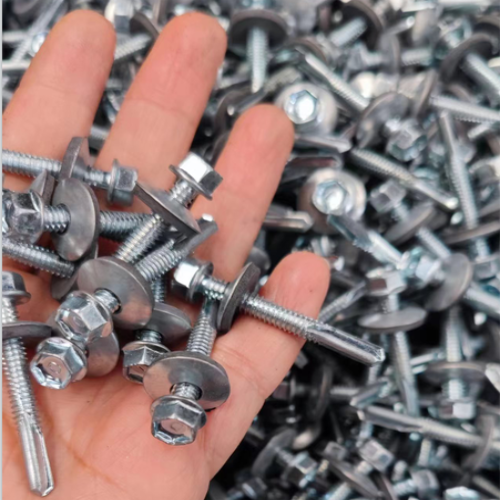m6 self tapping screw manufacturer
Understanding M6 Self-Tapping Screws A Comprehensive Overview of Their Manufacturing
In the ever-evolving world of fasteners, M6 self-tapping screws play a pivotal role in various industries, ranging from construction to electronics. These specialized screws are designed to create their own threads when inserted into materials such as metal, plastic, or wood, making them incredibly versatile and efficient. This article delves into the specifications, manufacturing process, applications, and advantages of M6 self-tapping screws.
What Are M6 Self-Tapping Screws?
M6 self-tapping screws are categorized based on their diameter, which measures 6mm. The M indicates that they adhere to the metric system standards. Self-tapping screws are further classified into two types thread-forming and thread-cutting. Thread-forming screws displace material to create threads without removing it, while thread-cutting screws create threads by actually cutting into the material.
Manufacturing Process
The manufacturing of M6 self-tapping screws involves several critical steps
1. Material Selection The first step is selecting appropriate materials. Common materials used in manufacturing these screws include stainless steel, carbon steel, and various alloys. The choice of material significantly impacts the strength, corrosion resistance, and overall performance of the screws.
2. Wire Drawing In this phase, metal rods or wires are drawn through a die to achieve the desired diameter. This process ensures that the wire has uniform thickness, which is crucial for the consistency of the final product.
3. Cold Heading The drawn wire is then cut to length and loaded into a cold heading machine. Here, the wire is shaped under high pressure into a rough screw form. This process not only shapes the screw but also helps in aligning the molecular structure of the metal, enhancing its strength.
4. Thread Rolling After cold heading, the screws undergo thread rolling, where the desired thread profile is rolled into the screw. This process creates threads without cutting away material, which is essential for retaining the strength of the screw.
m6 self tapping screw manufacturer

5. Heat Treatment Heat treatment is often conducted to improve the hardness and tensile strength of the screws. This treatment can involve processes like quenching and tempering, depending on the material used.
6. Surface Finishing Finally, the screws are subjected to various surface finishing techniques, such as plating or coating, to enhance corrosion resistance and aesthetic appeal. Popular coatings include zinc, chrome, and black oxide.
Applications
M6 self-tapping screws are used extensively in a variety of applications. In construction, they secure drywall, metal framing, and insulation. In the automotive industry, these screws attach panels and interior components. Additionally, in electronics, they are used to assemble circuit boards and other delicate components.
Advantages of M6 Self-Tapping Screws
One of the primary benefits of M6 self-tapping screws is their efficiency. They allow for quick assembly without the need for pre-drilling, resulting in significant time savings. Furthermore, their ability to create a tight seal ensures that components remain secure over time, reducing the risk of looseness and damage.
Another advantage is their versatility. With different head types, including pan, flat, and hex heads, these screws can adapt to various applications and aesthetic requirements. Additionally, manufacturers can produce them in varying lengths and thread designs to meet specific customer needs.
Conclusion
In summary, M6 self-tapping screws are a fundamental component in numerous industries due to their strength, efficiency, and versatility. Understanding their manufacturing process and applications can help engineers and builders make informed decisions when selecting fasteners for their projects. As technology advances, we can expect even more innovations in the design and production of self-tapping screws, further enhancing their effectiveness and reliability.
-
Top Choices for Plasterboard FixingNewsDec.26,2024
-
The Versatility of Specialty WashersNewsDec.26,2024
-
Secure Your ProjectsNewsDec.26,2024
-
Essential Screws for Chipboard Flooring ProjectsNewsDec.26,2024
-
Choosing the Right Drywall ScrewsNewsDec.26,2024
-
Black Phosphate Screws for Superior PerformanceNewsDec.26,2024
-
The Versatile Choice of Nylon Flat Washers for Your NeedsNewsDec.18,2024










